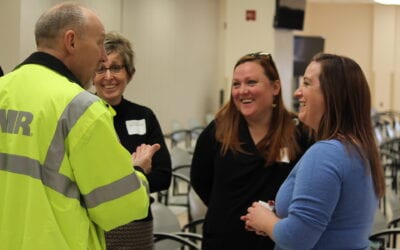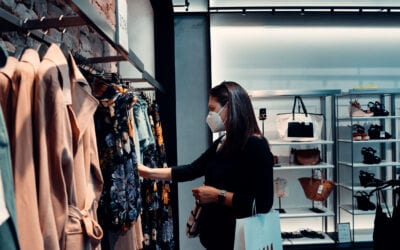Staying Safe in Multigenerational Households

NOTE: This COVID-19 post is over a year old and may contain outdated information. It has been left up for archival purposes only. For the most up-to-date information on masking, vaccines, and more, visit the CDC’s website.
It’s not uncommon for families to live in multigenerational households. In 2016, 20% of the United States population lived with multiple generations under one roof, according to Pew Research Center. The COVID-19 pandemic has brought on many challenges in our everyday life, and in some instances, the places that we live.
Older adults above the age of 65 and persons with underlying conditions have an increased risk for severe illness from the virus that causes COVID-19. However, it’s nearly impossible for older or immunocompromized caregivers to distance themselves from the children in their household. Here are some tips and resources to help multigenerational households stay safe and healthy during COVID-19.
Caution is Key
Caution continues to be important for individuals over the age of 65 or with underlying conditions. According to CDC, “If your household includes one or more vulnerable individuals then all family members should act as if they, themselves, are at higher risk. Learn how to protect yourself and others.”
At-Risk Members Should Avoid Caring for Children and Those Who Are Sick
If possible, older adults above the age of 65 and persons with underlying conditions should avoid caring for children in their household. The CDC recommends that if high-risk individuals must care for children in their household, the children in their care should not have contact with individuals outside the household. The CDC also recommends that high-risk individuals avoid taking care of people who are sick.
Limit Errands
Family members should only leave when necessary. Family members who are not high-risk should run errands. While doing so, they should wear a mask, avoid crowds, practice social distancing, wash hands upon returning home, and follow these recommended tips.
Separate Sick Household Members
Keep sick family members apart as much as possible. Use a separate room and bathroom if possible. All family members should wear a mask when interacting with a sick member. The sick family member should also wear a mask when interacting with others. Family members should wash their hands for at least 20 seconds after interacting with or cleaning up after the sick member. Avoid sharing household items with the person who is sick.
Find more tips about how to limit COVID-19 spread while living with others here and here. Find ESRD National Coordinating Center’s ‘Staying Safe in Multigenerational Households’ fact sheet here.
Source
Archives
- July 2025 (1)
- June 2025 (3)
- April 2025 (2)
- February 2025 (1)
- January 2025 (2)
- December 2024 (1)
- September 2024 (2)
- August 2024 (2)
- July 2024 (1)
- June 2024 (1)
- February 2024 (1)
- July 2023 (1)
- March 2023 (1)
- October 2022 (1)
- September 2022 (1)
- August 2022 (1)
- July 2022 (2)
- June 2022 (2)
- May 2022 (1)
- April 2022 (4)
- March 2022 (1)
- February 2022 (1)
- January 2022 (2)
- December 2021 (4)
- November 2021 (3)
- September 2021 (2)
- August 2021 (3)
- July 2021 (2)
- June 2021 (1)
- May 2021 (2)
- March 2021 (1)
- December 2020 (6)
- November 2020 (8)
- October 2020 (4)
- September 2020 (7)
- August 2020 (3)
- July 2020 (11)
- May 2020 (2)
- April 2020 (4)
- March 2020 (1)
Categories
- Communicable Disease (4)
- Clinical Services (18)
- Clinical Servcies (1)
- Health Promotions (72)
- Emergency Preparedness (8)





